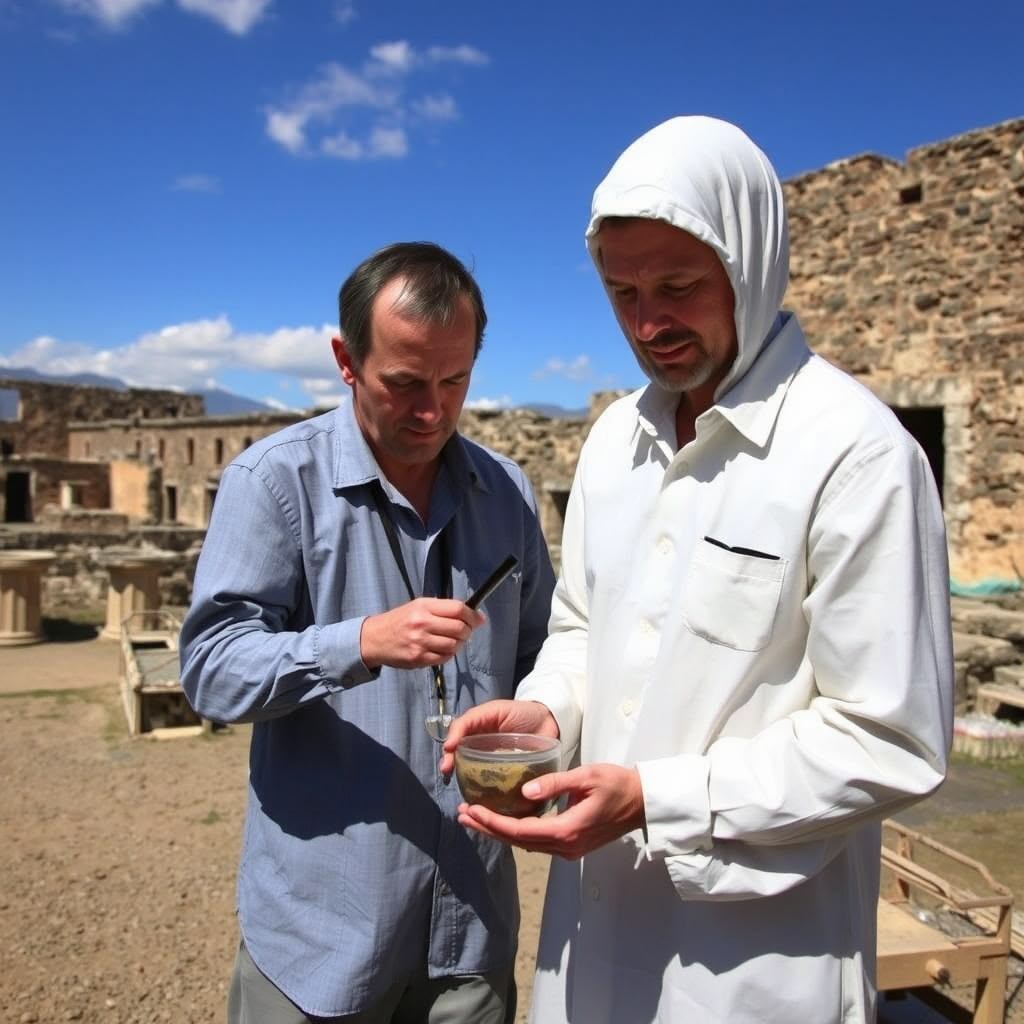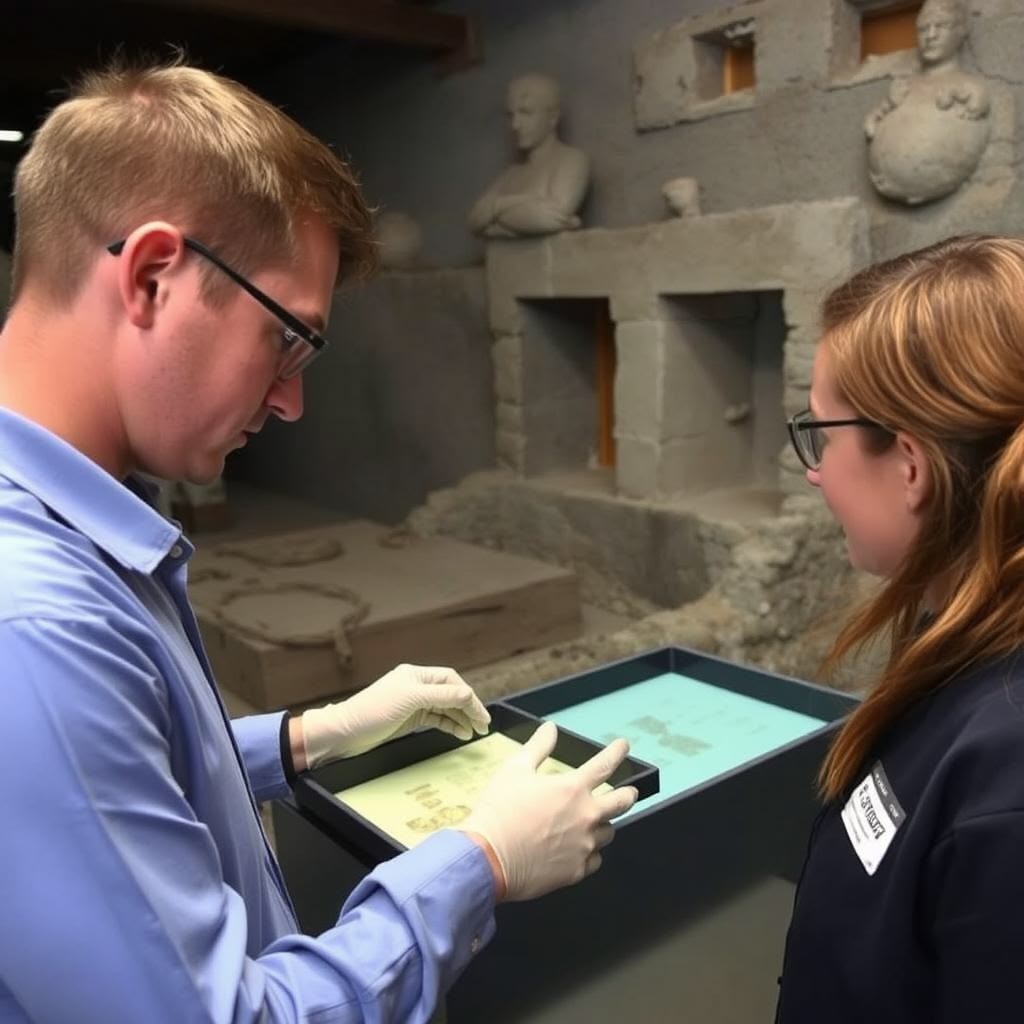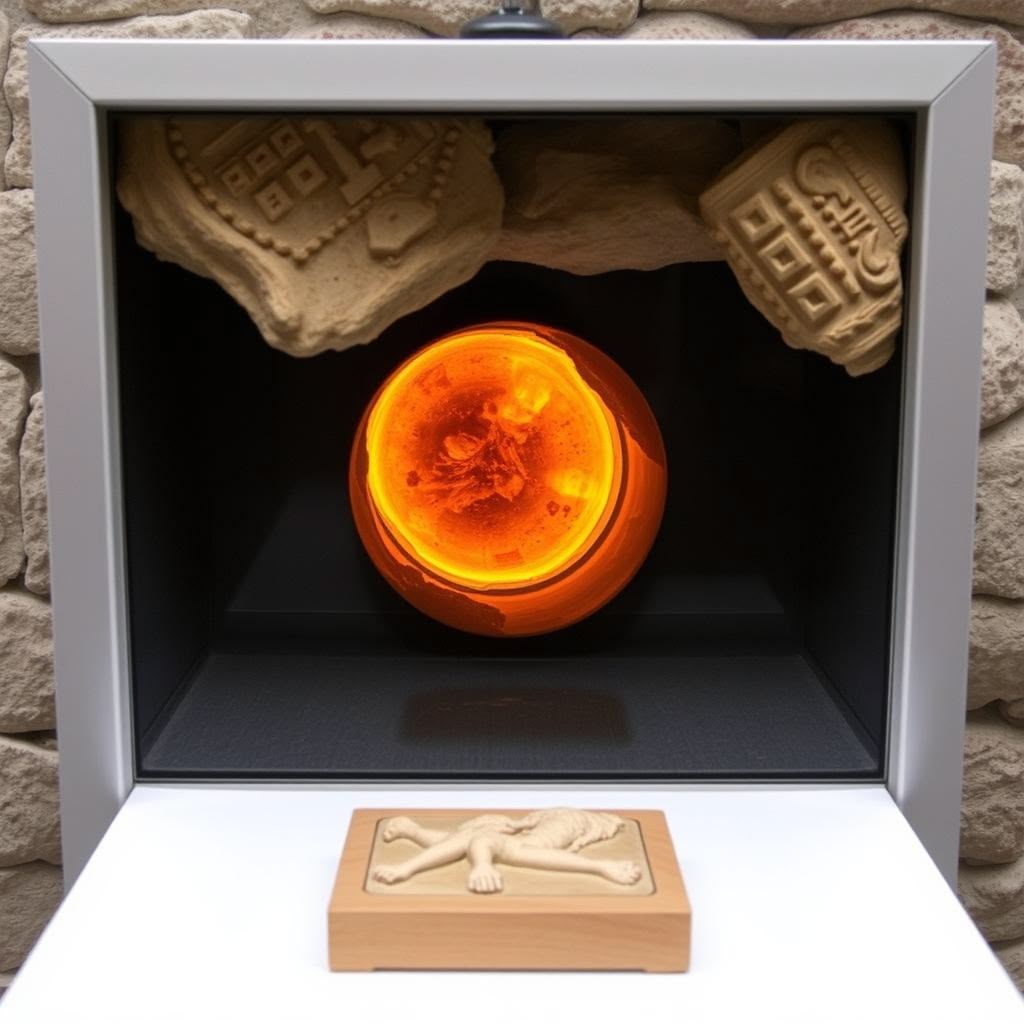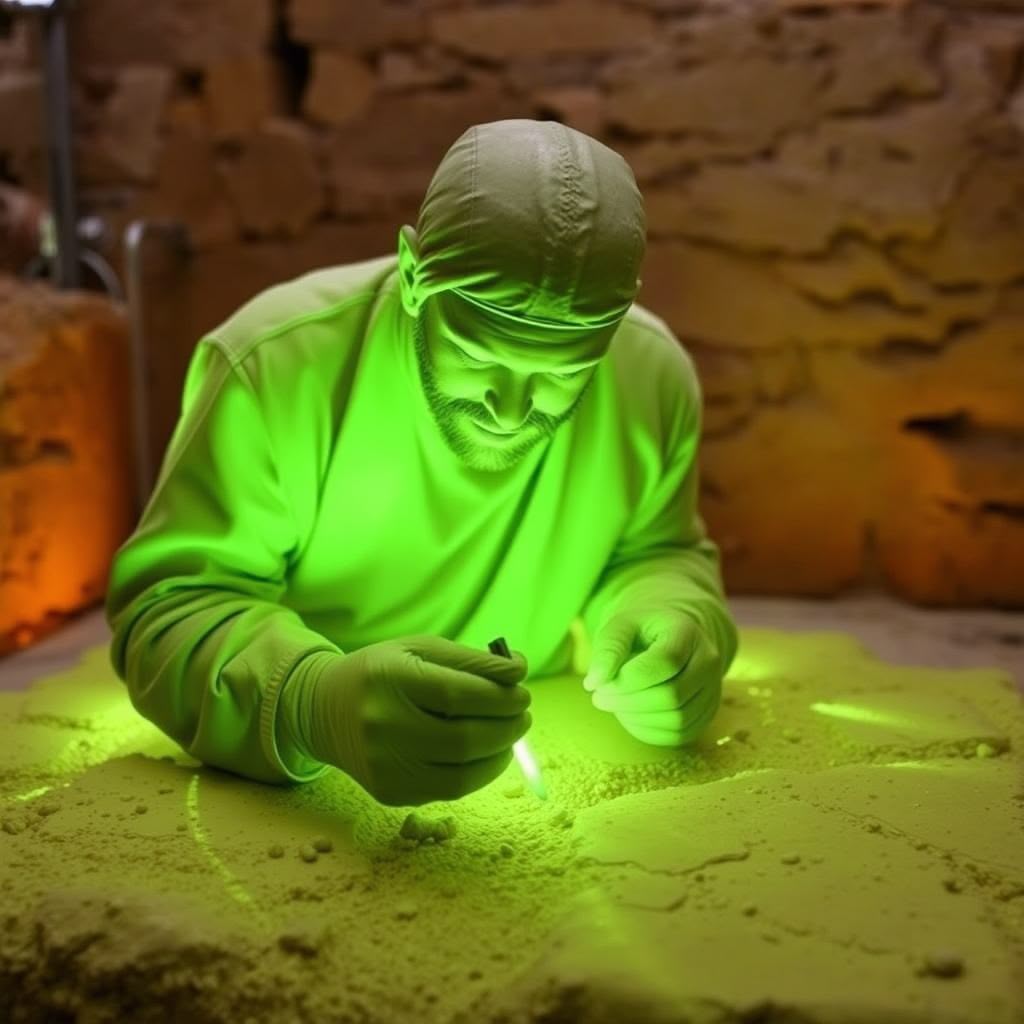The ground beneath Dr. Elena Rossi’s feet holds secrets that have remained untold for nearly two millennia. As she walks the ancient streets of Pompeii, her tablet displays something invisible to the naked eye—thermal anomalies indicating potential structures still buried beneath layers of volcanic ash. This isn’t the archaeology of pickaxes and brushes that dominated the site for centuries. It’s a revolution in historical research that’s changing everything we thought we knew about this remarkable Roman city.
“We’re seeing Pompeii with new eyes,” says Dr. Rossi, gesturing toward the digital rendering on her screen. “What would have taken decades to discover through traditional methods—if discovered at all—now reveals itself to us without moving a single stone.”
The transformation happening at Pompeii represents more than just technological advancement; it’s a fundamental shift in how we approach, understand, and preserve our collective human history. The convergence of cutting-edge technologies with classical archaeology has created a watershed moment in historical research—one that promises to reveal aspects of ancient Roman life that have remained hidden since Mount Vesuvius’s catastrophic eruption in 79 CE.

The Limitations of Traditional Archaeology at Pompeii
For centuries, archaeological work at Pompeii followed a straightforward if destructive methodology: dig, discover, and document. Early excavations beginning in the 18th century prioritized finding spectacular artifacts over understanding context. Walls were breached, structures compromised, and countless smaller artifacts lost in the quest for museum-worthy treasures.
The consequences of these approaches became increasingly apparent over time. Exposure to the elements caused frescoes to fade and structures to crumble. The very act of excavation often destroyed valuable information about how objects related to one another. Perhaps most critically, once a section was excavated, there was no possibility of returning to study it with better tools or methods—the context was permanently altered.
As archaeology evolved into a more methodical discipline, practices improved, but fundamental challenges remained. Traditional excavation is inherently destructive—to uncover one layer means disturbing or removing another. At a site as complex and significant as Pompeii, this presents an excruciating dilemma: advancing knowledge often means risking damage to an irreplaceable historical record.
This reality forced archaeologists to make difficult choices. Many sections of Pompeii remained unexcavated as researchers weighed the potential knowledge gained against the inevitable disruption excavation would cause. The limitations of traditional methods meant accepting that certain aspects of Pompeian life might remain forever beyond our understanding.

The Non-Invasive Revolution: Seeing Without Digging
The paradigm shift began with a simple question: What if we could see beneath the surface without disturbing it? This seemingly impossible goal has become reality through a suite of technologies adapted specifically for archaeological purposes.
Ground-penetrating radar (GPR) has emerged as one of the most transformative tools in the archaeological toolkit. By sending radio waves into the ground and measuring how they reflect back, GPR creates detailed images of subsurface structures without moving a grain of soil. At Pompeii, this technology has mapped entire city blocks that remain buried, revealing street layouts, building foundations, and even interior room arrangements.
The applications of GPR extend beyond simple mapping. Variations in signal reflection can indicate different materials—distinguishing stone walls from wooden features, identifying potential organic remains, and locating metallic objects. This level of detail allows archaeologists to prioritize areas for future research and make informed decisions about where limited excavation resources should be directed.
Working alongside GPR, LiDAR (Light Detection and Ranging) technology brings unprecedented precision to archaeological documentation. By bouncing laser pulses off surfaces and measuring return times, LiDAR creates three-dimensional models accurate to millimeters. When applied to Pompeii’s visible structures, this technology captures details too subtle for the human eye to detect—slight shifts in walls that might indicate earthquake damage, subtle differences in construction techniques, or signs of ancient modifications.
Perhaps most remarkably, LiDAR can penetrate dense vegetation and detect slight elevation changes in terrain, revealing features that would otherwise remain hidden. When combined with historical data, these subtle topographical signals have helped researchers identify previously unknown structures extending beyond Pompeii’s excavated areas.

The Thermal Revolution: Heat Signatures of History
While GPR and LiDAR have transformed understanding of Pompeii’s structural elements, thermal imaging has opened windows into aspects of daily life previously thought lost to time. Infrared cameras detect minute temperature differences on surfaces, revealing features invisible to the naked eye.
This seemingly simple technology has yielded extraordinary insights at Pompeii. As different materials absorb and release heat at varying rates, thermal imaging can reveal where walls were once painted, where doorways were later filled in, and even trace the path of ancient water systems. The technology is particularly valuable for identifying delicate organic remains that might be missed during excavation.
When applied systematically across the site, thermal imaging creates a new layer of understanding. Patterns emerge that connect seemingly unrelated structures, suggesting networks of activity that traditional archaeology might never detect. Seasonal variations in temperature provide additional data, as some features become more visible during specific weather conditions.
The non-invasive nature of thermal imaging makes it especially valuable for conservation. Detecting small temperature differences can reveal areas where moisture is accumulating within ancient walls—an early warning system for potential structural damage. This allows conservators to address problems before visible deterioration occurs, preserving Pompeii for future generations while continuing to extract new knowledge from its remains.

Digital Archaeology: When Artificial Intelligence Meets Ancient Rome
The revolution at Pompeii extends beyond hardware into the realm of computational archaeology. The massive datasets generated by new sensing technologies would be overwhelming without sophisticated software to interpret them. This is where artificial intelligence and machine learning have become essential archaeological tools.
Pattern recognition algorithms sift through terabytes of GPR data, identifying potential structures that human analysts might miss. Image processing software enhances faded frescoes, revealing details that have been invisible for centuries. Natural language processing helps connect textual evidence—inscriptions, graffiti, and historical accounts—with physical findings, creating a more complete picture of Pompeian life.
One of the most promising applications combines multiple data sources into integrated models. By layering GPR readings, thermal imaging, LiDAR scans, and traditional documentation, researchers create comprehensive digital reconstructions that can be explored virtually. These models allow for testing hypotheses without physical intervention—researchers can simulate how light would have entered a particular room, how sound would have traveled through an amphitheater, or how pedestrian traffic might have flowed through the city streets.
The computational approach extends to artifact analysis as well. When objects are excavated, 3D scanning creates perfect digital copies that can be studied remotely, allowing global collaboration without risking the original artifacts. Machine learning algorithms compare these scans with databases of known objects, helping to identify unusual items and connect them with similar findings from other sites.
DNA and Molecular Archaeology: The Biological Record
Perhaps the most remarkable aspect of the new Pompeii research involves techniques that were science fiction when excavations began at the site. Molecular archaeology—the application of biological and chemical analysis to archaeological materials—has opened entirely new dimensions of understanding.
Ancient DNA analysis, once considered impossible for remains subjected to the extreme heat of Vesuvius’s eruption, has yielded results through advances in extraction and sequencing technologies. By analyzing genetic material preserved in teeth and dense bone fragments, researchers have begun constructing a biological profile of Pompeii’s population—revealing information about ancestry, familial relationships, and even the presence of pathogens that affected the ancient community.
Complementing genetic research, chemical analysis of residues found on pottery, cooking implements, and storage vessels has illuminated the Pompeian diet and food preparation methods. Mass spectrometry can identify specific proteins, fats, and plant compounds, revealing which foods were stored in particular containers and how they were processed. This microscopic evidence creates a vivid picture of daily life that written sources alone could never provide.
Even the soil itself has become a valuable information source. Micromorphology—the microscopic study of soil structure—reveals patterns of human activity too subtle to observe during excavation. Analysis of soil samples can distinguish kitchen areas from workshops, identify animal housing spaces, and even detect seasonal patterns of use in different parts of buildings.
Preservation Through Documentation: Creating the Digital Twin
These revolutionary techniques share a common benefit beyond their research value: they contribute to an unprecedented level of documentation. Every scan, image, and analysis becomes part of a growing digital archive—a complete record of Pompeii that exists independently of the physical site.
This “digital twin” serves multiple purposes. For researchers, it provides a baseline against which to measure changes, whether caused by natural deterioration, conservation efforts, or new discoveries. For conservators, it creates a precise record of conditions at specific points in time, helping to track the effectiveness of preservation strategies and identify areas requiring intervention.
Perhaps most importantly, the digital record ensures that information isn’t lost even if physical elements of the site eventually succumb to time. While the goal remains preserving Pompeii itself for as long as possible, the reality of maintaining an ancient city exposed to the elements means some deterioration is inevitable. The comprehensive digital documentation ensures that future generations will still be able to study Pompeii even if certain physical features no longer exist.
This approach represents a philosophical shift as well as a technological one. Rather than viewing excavation as the primary goal of archaeology, the new paradigm emphasizes documentation and preservation. Some areas of Pompeii may ultimately remain unexcavated, preserved beneath protective layers of ash for future researchers with even more advanced technologies.
The Ethical Dimensions of New Archaeological Approaches
The technological revolution at Pompeii brings new ethical considerations to archaeological practice. Traditional questions about who “owns” the past and who should control access to archaeological sites take on new dimensions in the digital age.
Digital data democratizes access in unprecedented ways. Virtual reconstructions and 3D models allow people worldwide to “visit” Pompeii without physical travel, opening the site to those who might never have the opportunity to see it in person. This accessibility serves educational goals and builds broader support for archaeological research and conservation efforts.
However, digital access also raises questions about the contextual understanding of archaeological information. Without proper framing, data-driven reconstructions might present an oversimplified view of the past, reinforcing misconceptions or obscuring the interpretive nature of archaeological knowledge. Finding the balance between accessibility and nuance remains an ongoing challenge.
The non-invasive approach also forces reconsideration of excavation priorities. If technologies can reveal substantial information without physical digging, what justifies the decision to excavate? This question becomes particularly pointed for human remains, where dignity and respect for the deceased must be balanced against research potential.
Looking Forward: The Future of Pompeii Research
The technological revolution at Pompeii continues to accelerate. Emerging techniques promise even greater insights in coming years. Portable X-ray fluorescence devices allow in-field elemental analysis of artifacts without sampling or damage. Environmental DNA analysis can identify plant and animal species from microscopic remains in soil samples. Increasingly sophisticated AI models will continue improving our ability to process and interpret the massive datasets these technologies generate.
The implications extend far beyond Pompeii itself. The methodologies developed at this uniquely preserved site are being adapted for archaeological research worldwide. From remote sensing of jungle-covered Maya cities to non-invasive investigation of fragile underwater sites, the Pompeii approach is transforming global archaeology.
For Pompeii specifically, the future likely involves a hybrid approach—targeted, minimal-impact excavation guided by comprehensive non-invasive survey data. Areas identified as particularly significant or vulnerable may be carefully excavated, while others remain protected beneath their volcanic covering, preserved for future generations with even more advanced research tools.
This balanced methodology acknowledges both the value of new information and the irreplaceable nature of the archaeological record. It recognizes that the most responsible approach to sites like Pompeii involves patience and restraint—a willingness to leave some questions unanswered today so that they might be addressed more completely tomorrow.
Bridging Ancient and Modern: The Meaning of Pompeii Today
The technological revolution at Pompeii creates a powerful connection between past and present. As we apply our most advanced tools to understand this ancient disaster, we recognize parallels to our own relationship with natural hazards. The Pompeian experience of living in the shadow of Vesuvius resonates with contemporary communities facing volcanic, seismic, and climate-related threats.
Perhaps most profoundly, the new archaeological approaches at Pompeii remind us of the continuity of human experience. The people who walked these streets two millennia ago were not abstract historical figures but individuals with families, aspirations, daily routines, and concerns not unlike our own. The unprecedented detail revealed through new technologies brings these ancient lives into sharper focus, collapsing the temporal distance that separates us.
This connection is the ultimate value of the Pompeii revolution. Beyond specific historical insights, beyond technological achievements, the new archaeology offers something more fundamental: a richer understanding of our shared humanity across the centuries. As we carefully uncover Pompeii’s secrets without disturbing its remains, we honor both the past we study and the future researchers whose questions we cannot yet imagine.
In this balance between revelation and preservation lies the true transformation of historical research—a approach that recognizes archaeological sites not merely as sources of information to be extracted but as cultural treasures to be protected, interpreted, and transmitted intact to generations yet to come.

